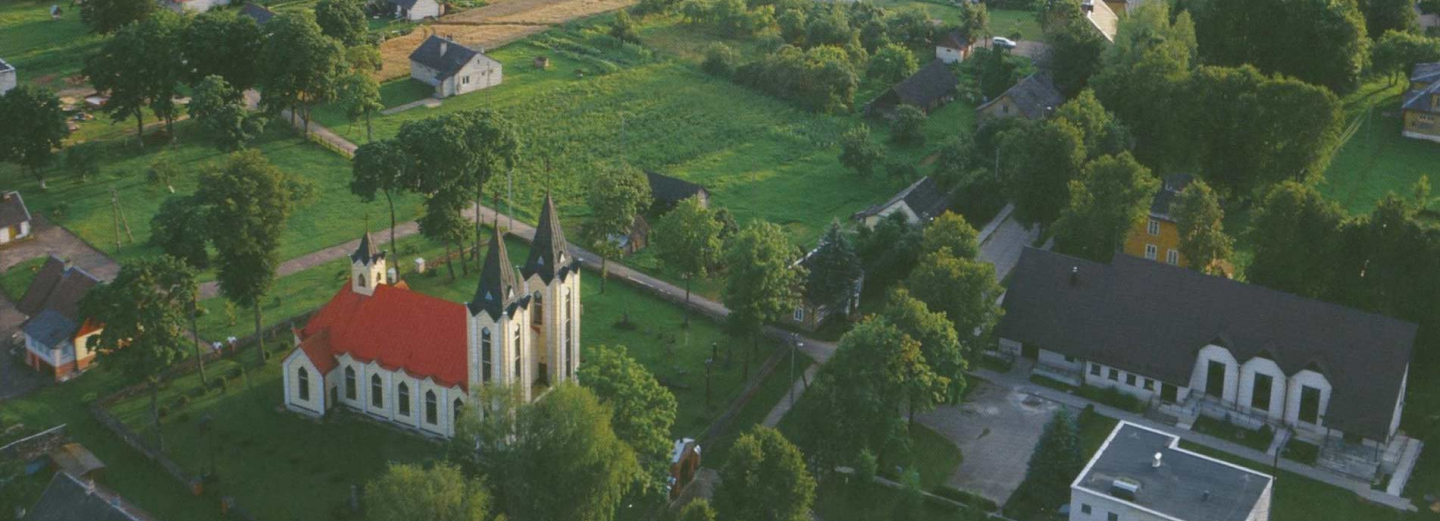Panoteriai town is the centre of Panoteriai eldership of Šilai eldership of Jonava district, located 19 km to the north from Jonava. The settlement is bounded on the south by the Bareišiai forest. The right tributary of the Lokys, Notera, flows through the town. According to the linguists, the name of the area originated from the name of the river.
In the historical sources, in the donation document of the Church of Siesikai, Panoteriai has been mentioned since 1441. According to this source, Baltramiejus Urbonaitis donated a land called Panoteriai to the Church of Siesikai and promised to build a Catholic chapel on it. From the 16th century, the mentioned Panoteriai manor was mentioned in the sources. It is known that in 1584-1700, the Panoteriai Chapel belonged to the Evangelical Lutherans. The letter that remained from 1594 testifies that at that time the preacher of Panoteriai Evangelical Reformed was the priest Simonas Senkevičius (Petras Martinavičius sold his land to him for 30 graves of Lithuanian groats). The chapel burned down in the 1700s, but was rebuilt and owned by Catholics after 44 years. 1774 The data of the case of Kaunas Castle Court show that Karolis Vižikovskis was the pastor of Panoteriai at that time (the case complains about the demolition of the sacristy house that stood in the land of Panoteriai).
In the 19th century, the owners of the Panoteriai manor were the Domeikava (surviving documents testify to their donations to the Panoteriai church in the 1920s and 1930s). During this period, a town grew near the church. Until the 20th century. The town and manor of the 1920s were called Chapels (it is believed that Panoteriai manor had been called Chapels before). In 1864, under the care of priest Juozapas Sakalauskas, the church was renovated and enlarged. It was given St. Title of the Discovery of the Cross.
During World War I, the school, established in the village of Pasoda, was relocated in Panoteriai in 1909. During 1919–1950, Panoteriai were the centre of the county. In 1923 there were 242 inhabitants in the town and village. During the interwar period, Panoteriai had a parish municipality, a primary school, the Ausra cooperative, a small credit society, a couple of shops, a police station, a postal agency, a health centre, etc. During the Soviet era, Panoteriai had the status of a collective farm settlement.
In 1994, there was rebuilt the wooden church, which burned down in 1941. Priest Vytautas Kazimieras Pesliakas took care of it. Panoteriai is currently the centre of the parish and eldership. In the town, up to 2019, there operated a basic school. Since 1967, the museum of the playwright Petras Vaiciunas, born in the nearby village of Piliakalniai (now private), the cultural centre and the library and the dispensary opened their doors.
Panoteriai has objects of the preserved historical heritage: 19th century. St.Joseph painting and a bell of the same period in a church, a manor house with a barn, a barn and a linden alley, a residential house built in 1870. The school’s wooden building was constructed in 1935. In 1920, a building of the former parish was built. Currently, the town has a population of about 350 inhabitants.

Coat of arms
of the community of Panoteriai







